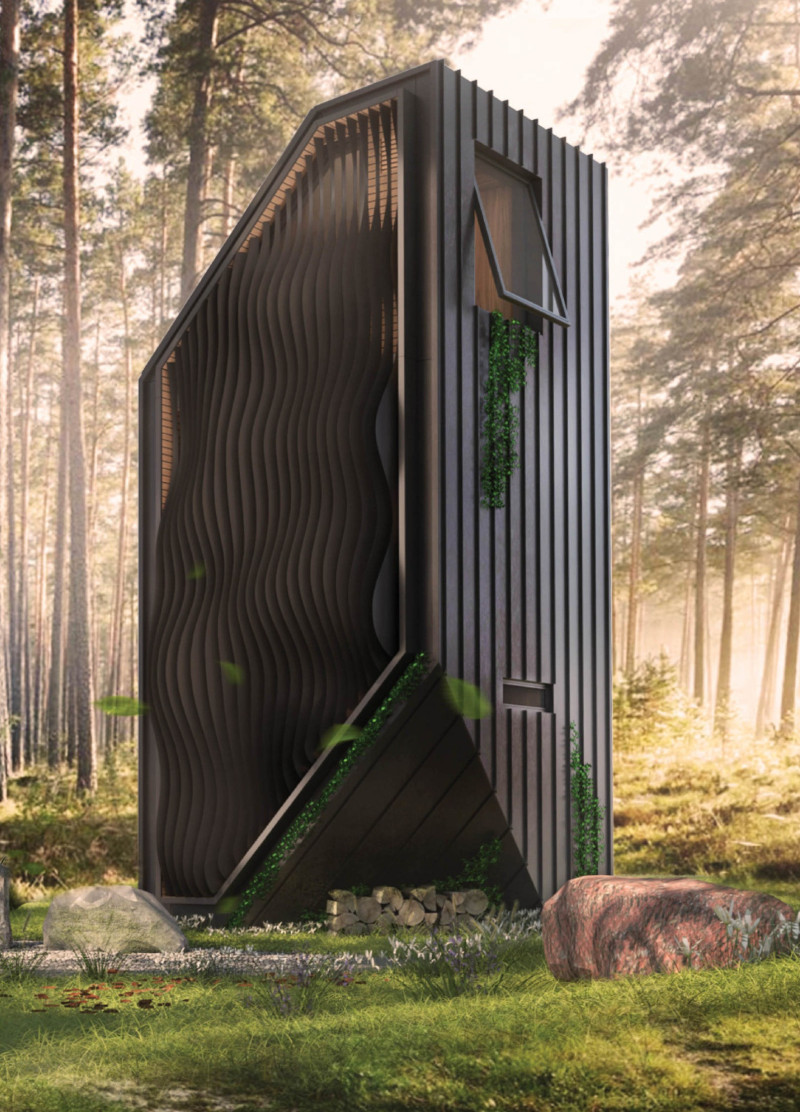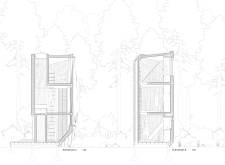5 key facts about this project
The Perched Meditation cabin is located in the Ozolini forest of northern Latvia. It functions as a retreat, designed to promote mindfulness and a connection to nature. The aim is to provide a tranquil space that allows for deeper introspection and reflection, away from the distractions of modern life. The overall design concept emphasizes layers and spatial arrangement, creating a distinct experience at each level.
Structural Organization
The cabin consists of three stacked levels, each with a specific purpose that enhances the experience for its occupants. The base level is practical, combining spaces for food preparation, storage, and a dry toilet. This level serves as a transition point, helping users shift their focus from the outside world to a more inward state. The utility space is functional yet intentionally crafted to support the need for a personal sanctuary.
Meditative Spaces
As one ascends to the second level, the focus shifts to self-reflection and personal documentation. The area above the bed features a sky frame that allows natural light to filter in, fostering a quiet environment for contemplation. This layout encourages users to engage with their thoughts and feelings, facilitating their journey through meditation.
Connection with Nature
The top level serves as a meditative perch and provides a direct view of the surrounding landscape. It enhances the connection with nature, allowing for an immersive experience. An operable opening gives users the option to control their interaction with the outside environment, creating a varied sensory experience that complements the act of meditating.
Sustainable Systems
A significant aspect of the cabin is the rainwater collection system. The roof is designed to capture rainwater, which is stored in a two-tank in-wall cistern. The primary tank filters air within the cabin, contributing to improved indoor air quality. The secondary tank is for practical uses, such as washing, which reflects a careful approach to sustainability and resource management.
The vertical fin screen system plays a crucial role in shaping the cabin's atmosphere. It filters light and introduces a distinct quality to each space, balancing privacy with a sense of openness as users move through the various levels.






















































